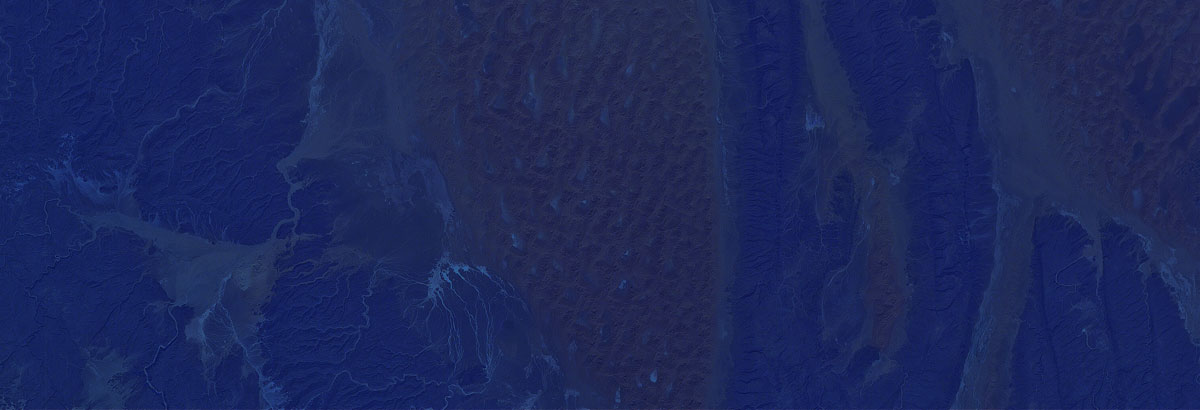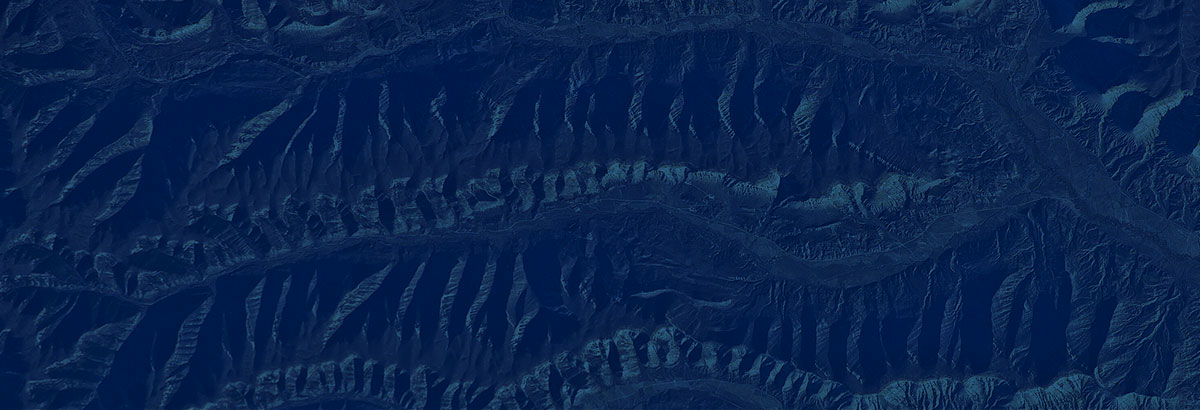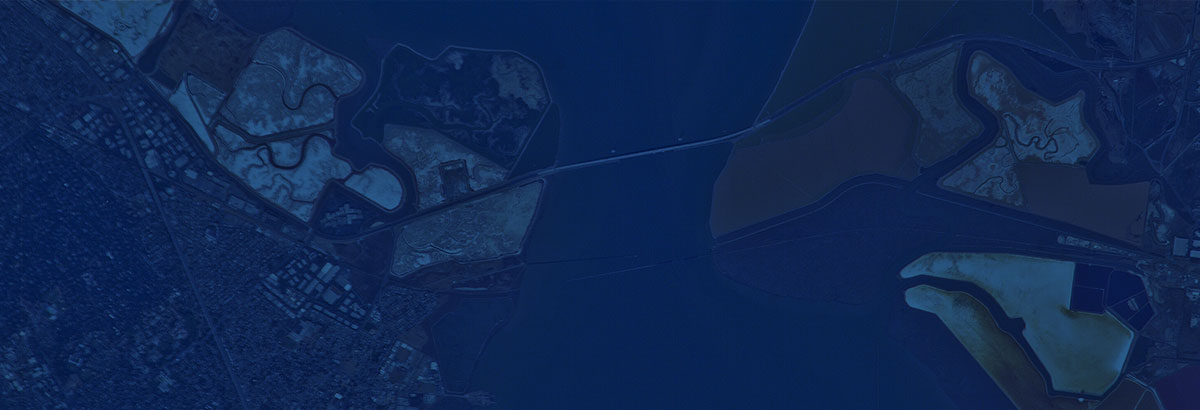How the Chelyabinsk Blast Changed the Way Humanity Deals with Asteroid Threats
February 15, 2023
On the ten-year anniversary of the Chelyabinsk event, we asked esteemed science journalist Stuart Clark to help tell the story of this meteorite bolide and the instrumental changes it instigated in how individuals, governments, and space agencies think about asteroid threats. An internationally read author, Stuart writes about space, astronomy, and science for publications such as The Guardian, BBC Science Focus, and New Scientist.
It began as an unexpected light in the early morning sky, swiftly took on the appearance of a catastrophe in the making, and finally resolved into a stark warning. Today, ten years may have passed but the message from the Chelyabinsk asteroid blast remains as powerful as ever.
Shortly after dawn on 15 February 2013, the skies above the southern Ural region of Russia lit up as a tremendous fireball streaked across the sky. Captured by a multitude of dash cams and other security cameras, images were soon circulating around the world of this small asteroid exploding at an altitude of around 30 kilometers above the Chelyabinsk Oblast.
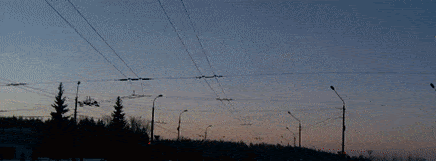
Image of Chelyabinsk fireball streaking across sky on 15 February, 2013. Credit: Aleksandr Ivanov
The size of the detonation was astonishing, releasing an equivalent explosive yield of around 400–500 kilotons of TNT, or around 26–33 times the energy of the Hiroshima atomic bomb. As the asteroid barrelled across the sky, it spread this energy across a wide area, damaging more than 7,000 buildings in six cities. Approximately 1500 people were injured badly enough to seek medical attention, mostly from flying glass from the windows that were shattered by the asteroid’s blast wave.
And yet, it was a lucky escape.
No one was reported to have been killed by the effects of the blast. As a result, the Chelyabinsk meteor was devastating enough to make headlines around the world about the dangers that asteroids pose, yet it thankfully stopped far short of being a human tragedy on the scale of many other natural disasters.
“The French media were going nuts,” remembers Patrick Michel, Côte d’Azur Observatory, France, who spent the day fielding questions from concerned journalists. Their concern was partly because another asteroid, 2012 DA14, was due to pass closer to Earth than some telecommunications satellites later that same day, and this news had been widely publicized. The Chelyabinsk impact sparked fears that 2012 DA14 had fragmented and that another—possibly larger—impact was coming later. Yet, the two asteroids were on completely different orbits, so it was easy to dispel that fear.

Tabloid newspapers around the world published sensational headlines in response to the Chelyabinsk event. Credit: nypost.com
For those involved in planetary defense research, it certainly helped them course-correct a kind of tongue-in-cheek mentality that had sprung up around the discipline in the wake of the 1998 Hollywood blockbuster Armageddon. In that movie, Bruce Willis led a gung-ho action adventure to deflect a dangerous asteroid that was threatening Earth. While the movie’s success certainly raised the profile of planetary defense, it bore little resemblance to reality. Chelyabinsk helped show people that reality was anything but entertaining.
“Now the idea of preventing asteroid impacts is somewhat mainstream, at least if you watch popular movies and TV. I think a lot of it had to do with the Chelyabinsk asteroid impact in 2013 and the subsequent media coverage, as well as discussion amongst the space agencies and within the halls of government,” wrote Ed Lu, co-founder of B612 Foundation, in a 2017 blog post.
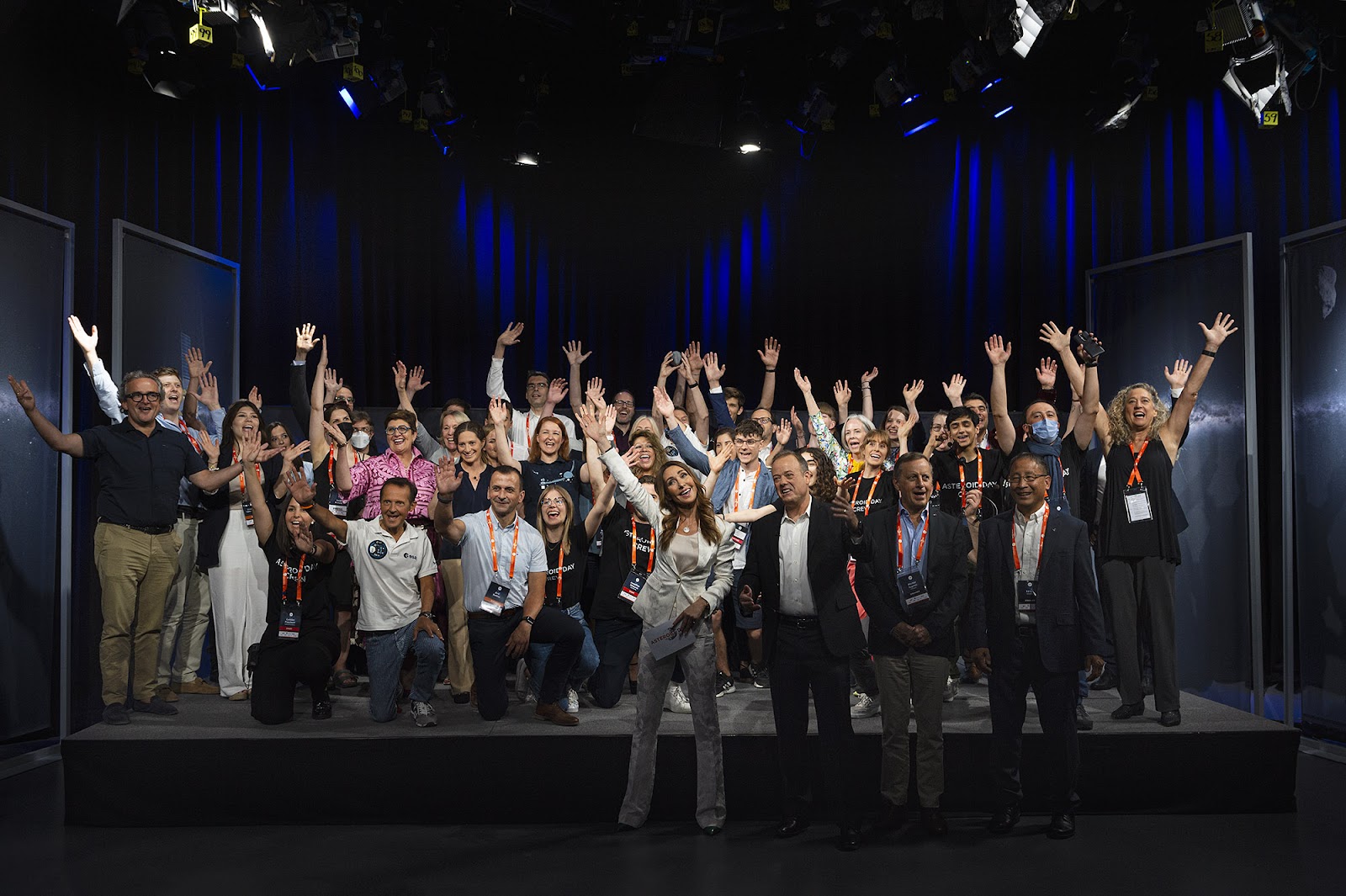
Astrophysicists, astronauts and asteroid mission experts participate in Asteroid Day LIVE 2022, a four hour broadcast all about asteroids and free to watch online. Credit: Max Alexander/Asteroid Foundation
To maintain this upswing in public interest about asteroids, Asteroid Day was co-founded the year following the impact by astrophysicist and famed musician Sir Brian May of the rock group Queen, Apollo 9 astronaut Rusty Schweickart, filmmaker Grig Richters, and B612 Foundation President Danica Remy. Every year since, Asteroid Day has run global events to educate the public about the importance of asteroids – their role in the formation of our solar system, their impact on space resources, and the importance of defending our planet from future impacts.
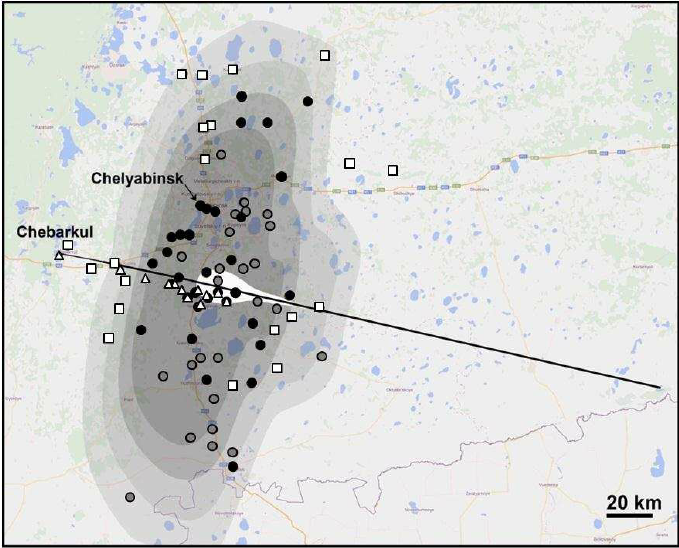
Map of glass damage, with overlay of model calculations. Grey symbols correspond to the official list of most damaged settlements, while black symbols are villages visited that reported damage (white squares: no damage). The black line is the fireball trajectory. The white triangles are locations where meteorites were recovered. Credit: Olga Popova, Russian Academy of Sciences, Peter Jenniskens, SETI Institute, et al.(2013).
Scientifically, the Chelyabinsk impact also proved invaluable. Up until that point, the computer models of asteroid impacts had largely been based on the reconstruction of historical incidents such as the Tunguska impact of 1908, and other highly explosive events such as nuclear bomb tests (although, it is important to stress that while the energy yields can be similar, there is no radioactivity associated with asteroid impacts). Following Chelyabinsk, astronomers had a well-documented record of what happens when a small asteroid, around 20 meters in diameter, crashes into Earth’s atmosphere.
It meant that the computer models could be improved by adjusting them to faithfully reproduce the observed effects of the asteroid’s entry, such as the size and brightness of the fireball and the subsequent debris cloud when it finally exploded. Mark Boslough, Sandia National Laboratories, and colleagues did this with great effect with their supercomputer codes. In doing so they highlighted how important it is for asteroid search programs to continue down to smaller and smaller diameters.
Alan Fitzsimmons, Queen’s University, Belfast, also remembers that the investigation into the impact, especially retrieving the fragments of the asteroid that fell to Earth, was one of the last times that Russian and Western scientists openly collaborated. Just a year after Chelyabinsk, Russia annexed Crimea from Ukraine creating a hardening of political goodwill. “We had really serious collaboration in the field between Western and Russian scientists, but things dissipated pretty quickly because of the politics,” he says.
However, transatlantic collaboration on planetary defense blossomed. Both NASA and ESA had been studying concepts for asteroid deflection test missions. In 2015, those separate plans came together in the form of a joint mission called AIDA (Asteroid Impact and Deflection Assessment). NASA launched the impactor spacecraft (DART) in 2021. It collided with asteroid Dimorphos in September 2022, altering the space rock’s orbit and proving that asteroid deflection is within our capabilities.
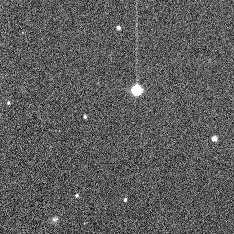
DART impact and its corresponding plume as seen by using the Mookodi instrument on the SAAO’s 1-m Lesedi telescope. Credit: Dr Nicolas Erasmus (SAAO) and Amanda Sickafoose (Planetary Science Institute)
ESA is currently building its part of the bargain, the Hera mission, which will launch in 2024 and study Dimorphos. Once we understand the target asteroid better, our computer models of asteroid deflection can then be improved, ready for when we need to deflect an asteroid for real.
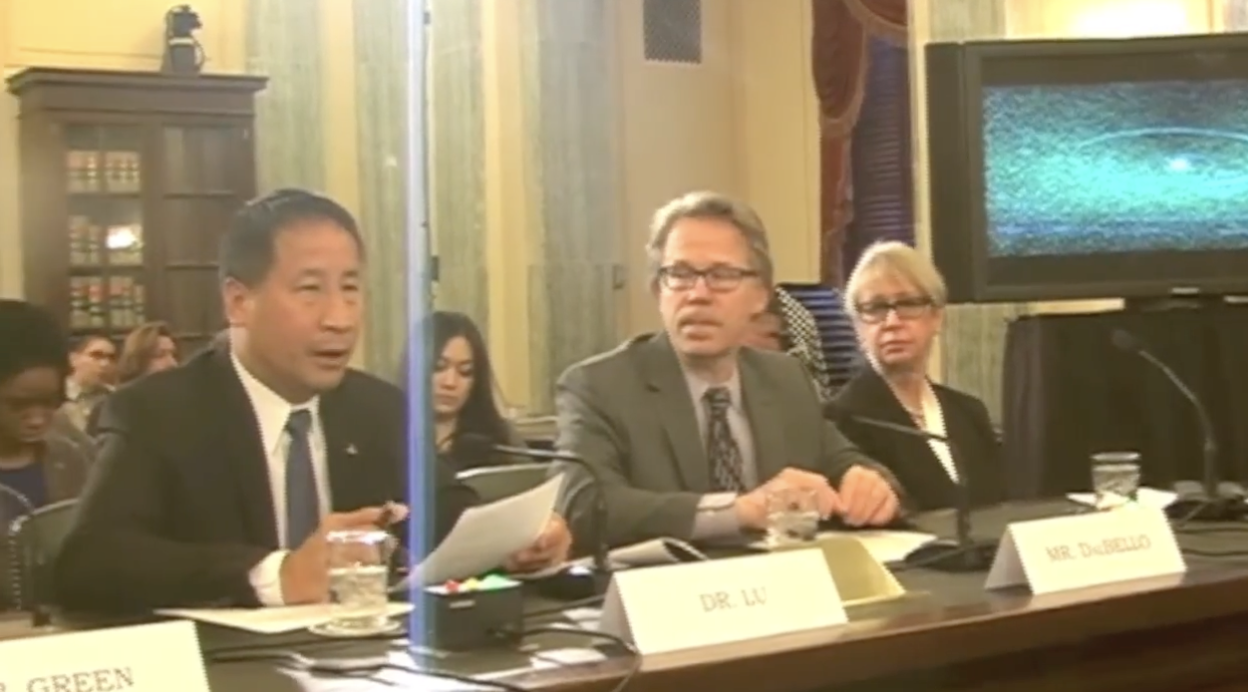
On March 21, 2013, Dr. Ed Lu, Executive Director of the Asteroid Institute and co-founder of B612 Foundation, spoke at a Senate subcommittee (U.S. Senate Committee on Commerce, Science and Transportation) hearing convened to discuss space-borne threats to human civilization.
While it is almost impossible to say just how much Chelyabinsk influenced politicians and funding agencies to green light these missions and all the other studies, it is clear that the impact gave the modern world a stark reminder of the power and the unpredictability of asteroids, and the continued need to build a coordinated program of planetary defense.
And that program begins with surveys.
The last decade has been characterized by a dramatic rise in the number of asteroid detections. In the last three years alone, around 3000 previously unknown near-Earth asteroids have been found every year. In 2013, before Chelyabinsk, the rate was hovering around 1000 new discoveries a year. The majority of these have been found by the NASA-funded Catalina Sky Survey and the University of Hawaii’s Pan-STARRS and ATLAS telescopes.
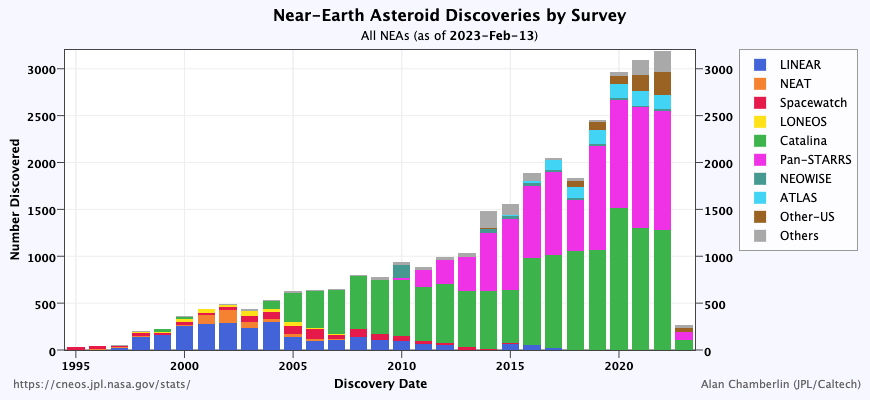
Number of NEA discoveries per year, by survey. Credit: CNEOS
In the coming years, the pace of discovery is set to increase still further. The Vera Rubin Observatory’s Legacy Survey of Space and Time (LSST) and ESA’s Flyeye will be online soon, along with NASA’s Near-Earth Object Surveyor Mission, or NEO Surveyor. To keep up with this flood of data, new software detection programs will be needed such as B612 Foundation’s Asteroid Discovery Analysis and Mapping (ADAM) computational platform. This computational engine will use data from the largest sky surveys to literally map out the solar system.
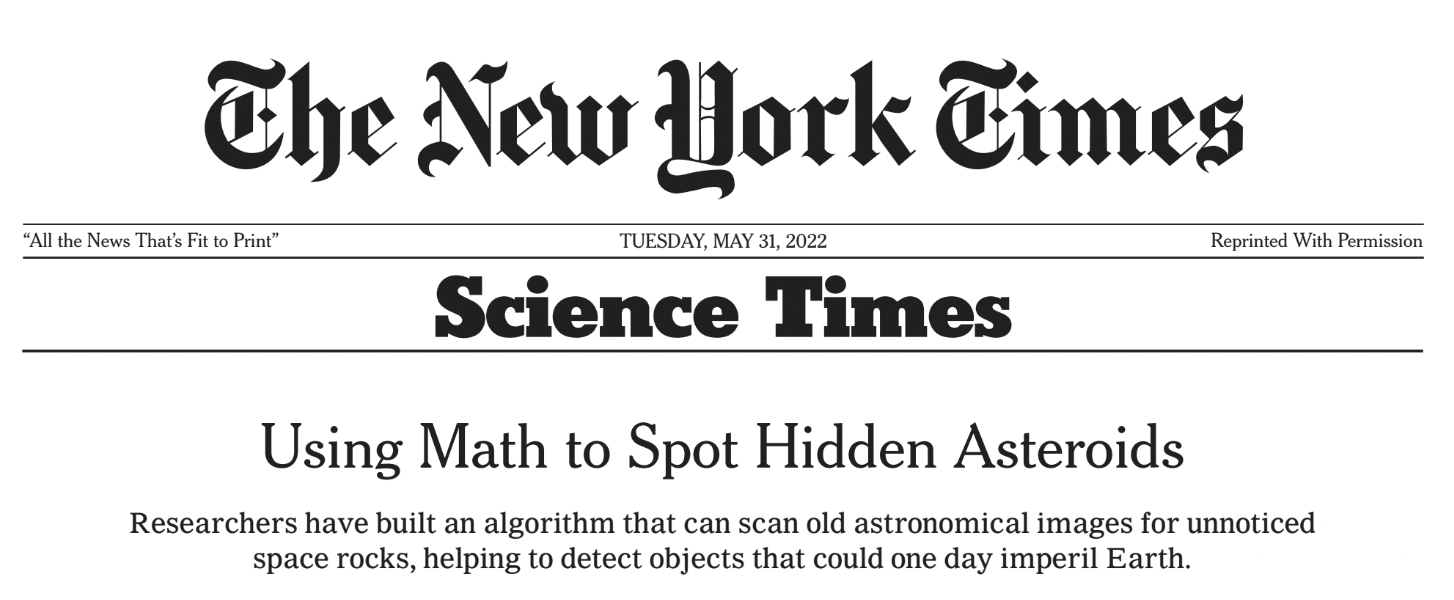
The New York Times publishes an article in May 2022 on the asteroid discovery capabilities of the Asteroid Institute’s Asteroid Discovery Analysis and Mapping (ADAM) platform.
And there is a lot of work to be done. NASA’s NEO Surveyor is designed to discover 90% of asteroids 140 meters in diameter but Chelyabinsk was only 20 meters at most. So most Chelyabinsk-sized asteroids will remain undetectable to us for now. The message is clear, we must continue this work with greater vigor than before, and not forget the images from 10 years ago.
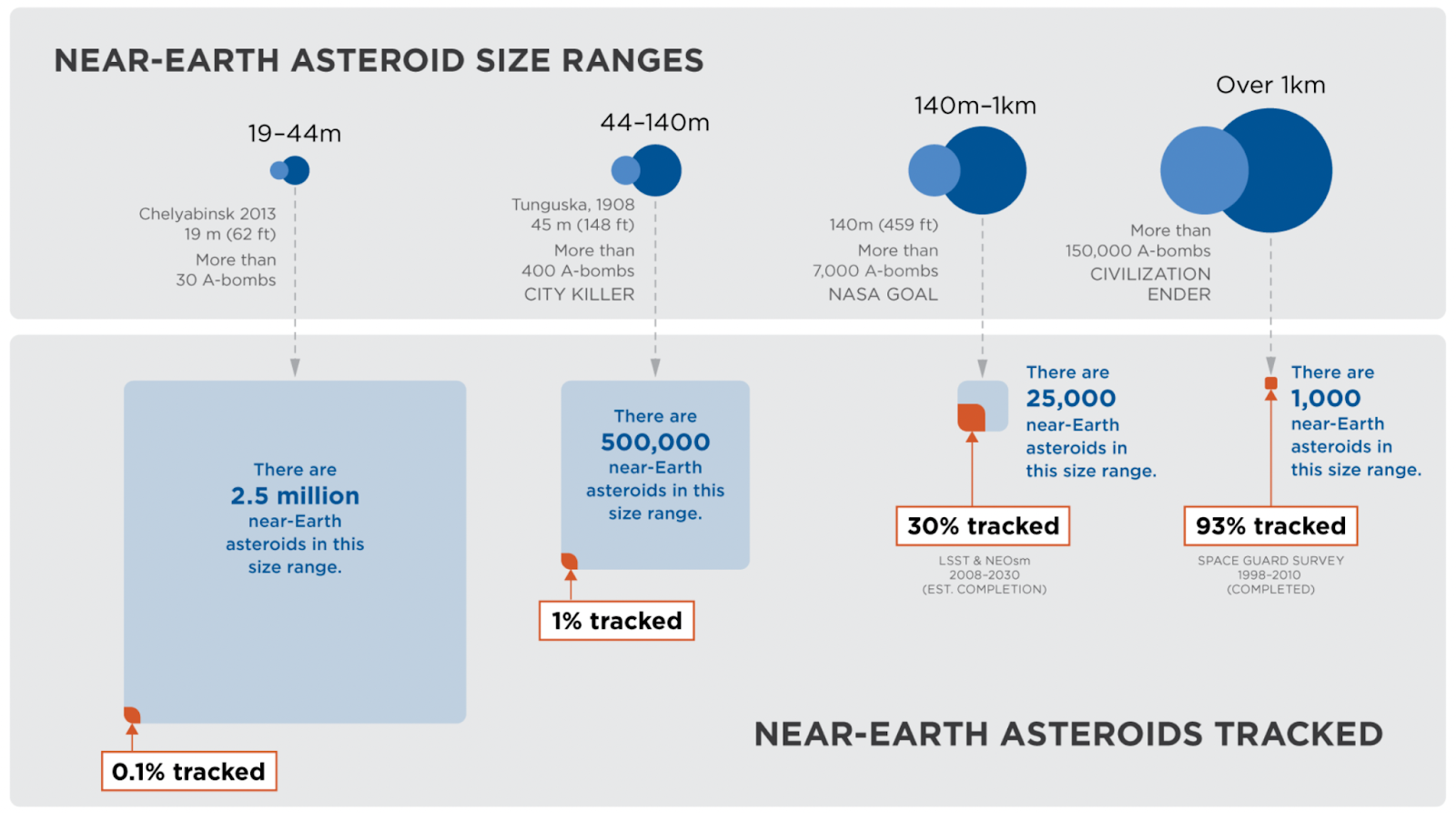
Credit: Asteroid Institute, a program of B612 Foundation.
“I think the attitude within the planetary science community was that we felt a little bit vindicated by Chelyabinsk, and it also gave us a kick, telling us, ‘Okay, we’ve got to work even harder on this stuff.’” says Alan.
The effort continues.
 About Stuart Clark
About Stuart Clark
Dr Stuart Clark is an award-winning science journalist and author, with a first class honors degree in astronomy and physics, a PhD in astrophysics, and an honorary DSc for “services to astronomy and the public understanding of science”. A Fellow of the Royal Astronomical Society in the UK, he writes the Guardian’s Starwatch column. His latest book is Beneath the Night: how the stars have shaped the history of humankind (Faber).
Follow Stuart:
Twitter
Facebook
His books can be found here.









